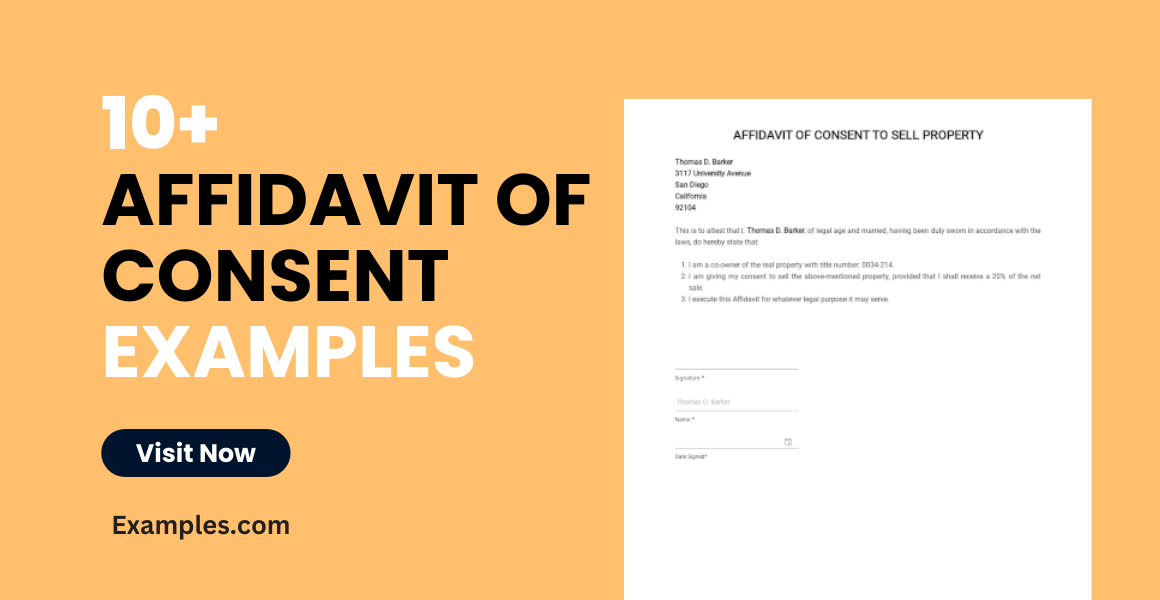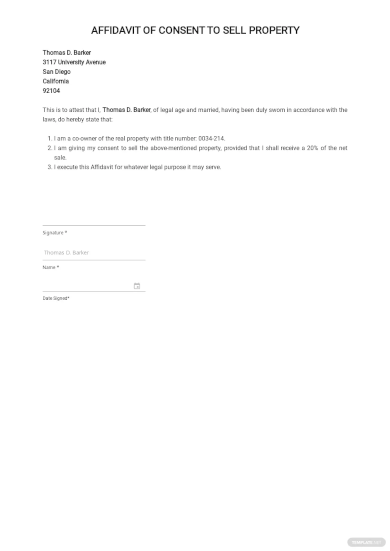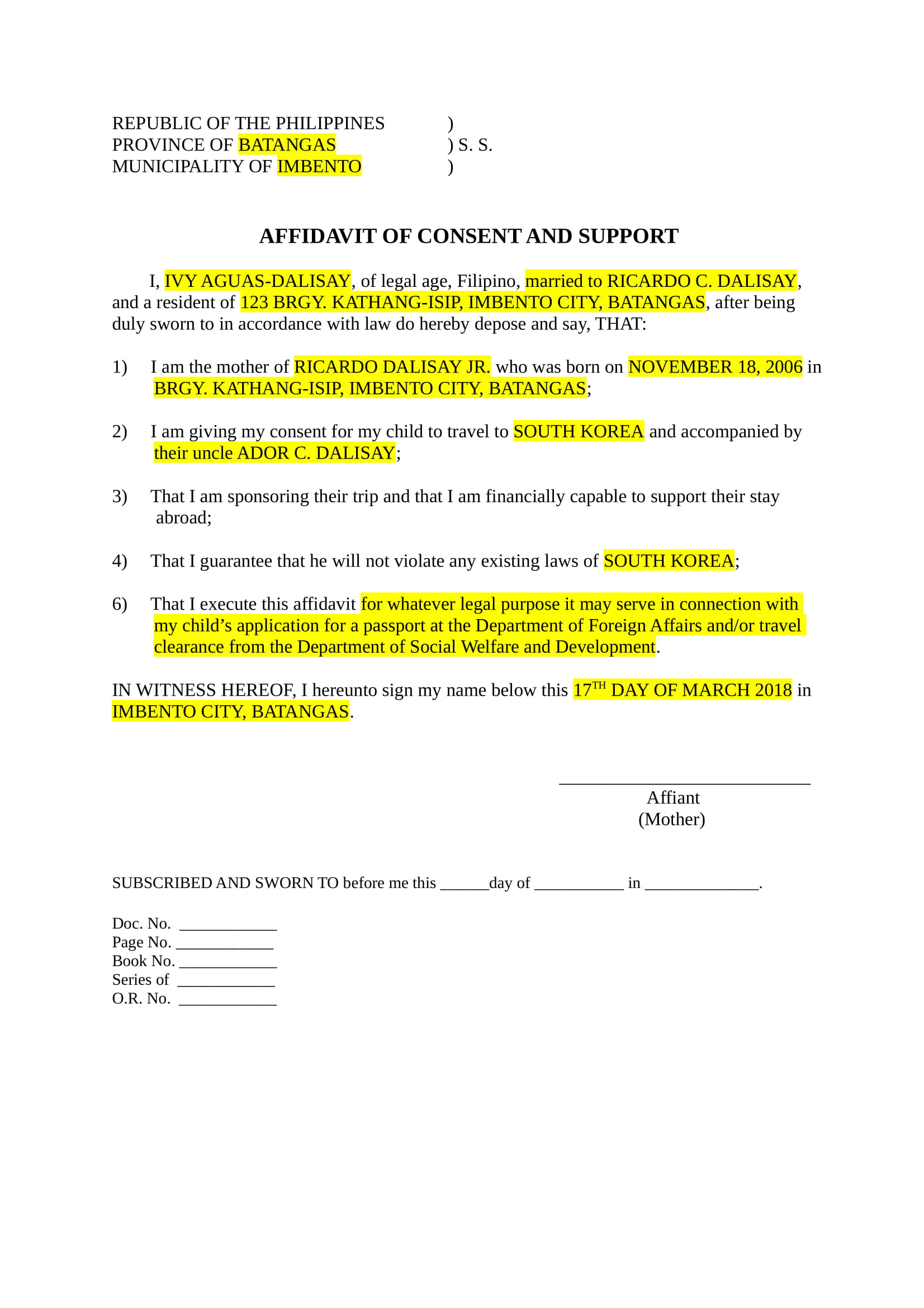

If you have a kid still studying in school, and he is active in many activities, it will not be too long before he gets the chance to be travelling to some places. If he is active in sports activities, he may have the chance he will be sent to places for a competition. Or if he is good at spelling, he may be sent out for a spelling bee competition. Or if he is good at drawing, painting, speaking, and the countless activities that he is good at, there will come a time that he will be going out to some places that need your consent.
When that happens, the organizers in the school will ask the parents’ kids their consent that they be sent out to represent in an event. In lay man’s term, it is simply called consent. A consent can be as simple as a vocal agreement, or in a letter. However, there is a more professional, legal way of preparing a consent, and it is called affidavit of consent.


An affidavit of consent is any written agreement, with the affiant making a sworn statement that his or her children, for example, be allowed to be sent to or be taken somewhere else for some academic or non-academic activities. The parent of the student, in an affidavit, becomes the affiant, which means he or she will make a sworn statement allowing his or her kids to be involved in a specific activity that may require special permission from the parents. By doing so, the parents are sort of involved in the said activities.
But the parents’ consent is just basic, as compared to an affidavit of consent because in an affidavit of consent, there is a notary. A notary is someone who is licensed to formalize and make a document legal. In some places, he is a barrister. In other places, he is the lawyer. And in some other place, he is a solicitor. A parents’ consent can be in a form of a slip, or a letter. It can be written by the school in charge and may require a parent’s signature.
Consent can be demonstrated through both action (verb) and agreement (noun). Here are succinct examples: